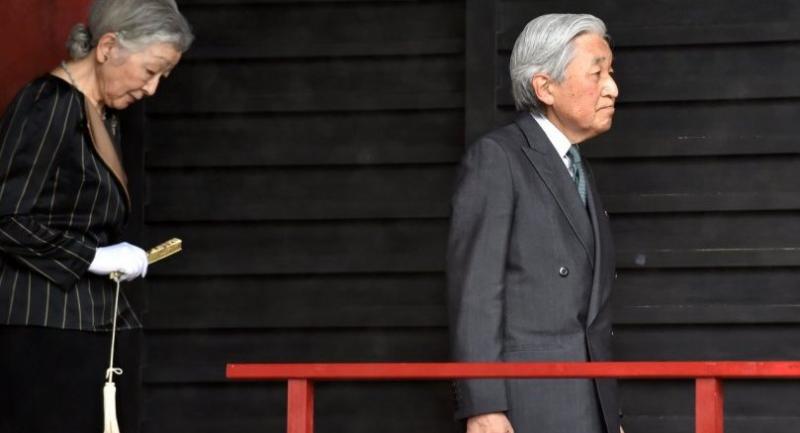Emperor’s abdication ceremony, the first in 200 years, likely to be held in December

Tokyo- The Japanese government is planning to hold a ceremony for Emperor Akihito’s envisioned abdication next December in what would be the nation’s first such event in around 200 years, official sources said on Wednesday.
The last time Japan held a ceremony for an emperor’s abdication was in 1817, when Emperor Kokaku relinquished the Chrysanthemum Throne. The government will consider how to implement the plan by studying documents describing ceremonial manners for abdications in the past.
The abdication ceremony is planned to be held aside from a series of enthronement ceremonies for Crown Prince Naruhito. It may be treated as a state act that requires Diet approval to conduct, the sources said.
Of Japan’s 125 emperors, including the sitting 83-year-old, 58 have so far abdicated. But legislation currently only allows posthumous transfer of the throne.
Prime Minister Shinzo Abe’s government is now mulling legal changes to enable Emperor Akihito to hand over the throne to Crown Prince Naruhito, 57, following the Emperor’s rare video message last summer indicating his desire to step down due to his advanced age.
While the timing of the abdication has not been formally decided, the government is considering December, apparently having in mind the Emperor’s 85th birthday next December 23.
The Heisei Era, which designates the reign of the sitting emperor, is expected to last till the end of the next year, and a new era under his first son, Crown Prince Naruhito, will begin on the first day of 2019, according to the sources.
Japan’s gengo era name remains in use, with calendars and official documents often designating years by era name, with or without reference to the Gregorian date. By avoiding a new era to start in the middle of a year, the government is trying to avoid creating complications to people’s lives by the era name change.
The first emperor who abdicated is believed to be Emperor Kogyoku, who handed over the throne to Emperor Kotoku during the Taika no Kaishin political reform that put the Imperial house in control of Japan in the seventh century.
Japan started holding ceremonies for emperor abdications during the eighth century at the latest, and ceremonial practices were carried on to the latest abdication ceremony for Emperor Kokaku 200 years ago, according to the sources.
In such ceremonies, an agent reads out an emperor’s words explaining the reasons for his abdication with the retiring emperor attending.
The likely location for the abdication ceremony of Emperor Akihito is the Imperial Palace. The timing of the event will be either before or after Kenji to Shokei no Gi, a ceremony to hand down traditional properties, such as the sacred sword and jewels, to the new emperor, the sources said.
After the handing of properties ceremony, which marks the completion of the throne ascending procedures, the new emperor is to hold the Choken no Gi first audience ceremony to meet with the heads of the government-legislative, administrative and judicial systems.
The government is planning to hold those ceremonies by the end of 2018, and an enthronement ceremony, called Sokui no Rei, that formally announces the new emperor’s accession sometime in 2019.
In the case of the previous Imperial succession following the death of Emperor Hirohito, posthumously known as Emperor Showa, on January 7, 1989, the handing of properties ceremony was held on the same day and the first audience ceremony was held two days later, while the enthronement ceremony was held on November 12, 1990.
